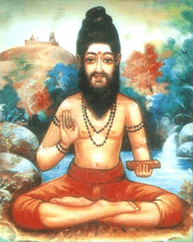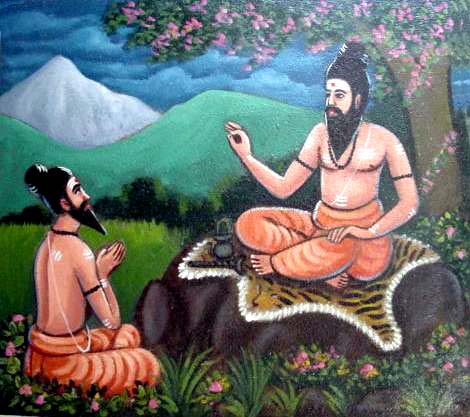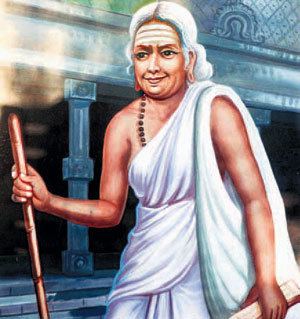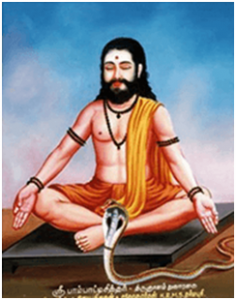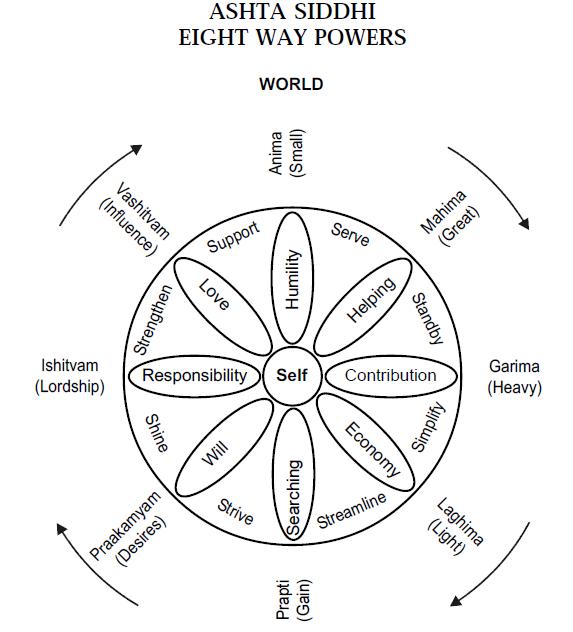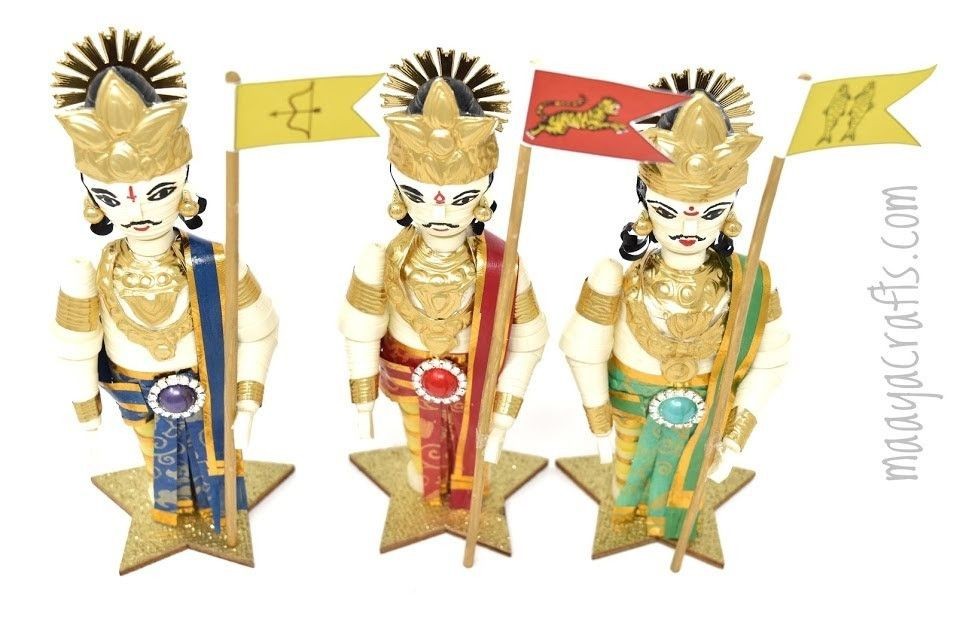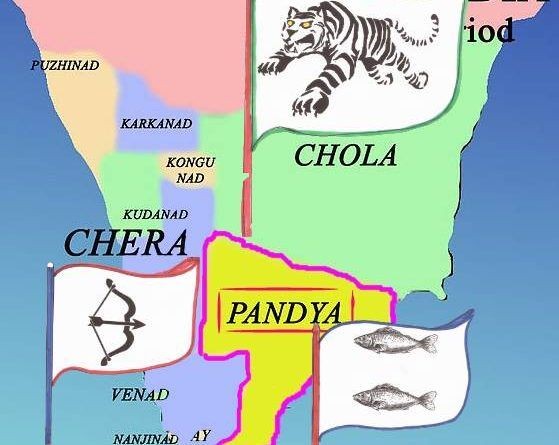
#Thread
Kalanginathar Siddhar- I stumbled upon some interesting information about Kalanginathar Siddhar. Some, I found hard to believe and did not want to put out without verifying. Alas, I was unable to do so, hence writing this thread as points divided into Facts and Beliefs.
Kalanginathar Siddhar- I stumbled upon some interesting information about Kalanginathar Siddhar. Some, I found hard to believe and did not want to put out without verifying. Alas, I was unable to do so, hence writing this thread as points divided into Facts and Beliefs.
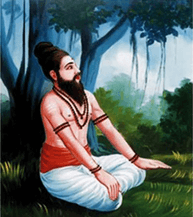
Facts:
1) Kalanginathar Siddhar is Guru of Bogar Siddhar (please read this thread on Bogar Siddhar). He taught Bogar Siddhar everything about Medicine, Alchemy, Meditation, etc.
@HelloNNewman @RajiIndustani @Speakwithsense1
1) Kalanginathar Siddhar is Guru of Bogar Siddhar (please read this thread on Bogar Siddhar). He taught Bogar Siddhar everything about Medicine, Alchemy, Meditation, etc.
@HelloNNewman @RajiIndustani @Speakwithsense1
2) Kalanginathar Siddhar and Bogar Siddhar cared for each other and had a Father-Son like relationship. In fact, Bogar glorifies Kalanginathar Siddhar in many of his poems and refer to him as Father (sorry, couldn’t find verses)
@wataboutery @Kishoreciyer1
@wataboutery @Kishoreciyer1
3) Kalanginathar Siddhar is also known a ‘Kanja Malai Siddhar’, as he used to live in Kanja Malai, Salem, TN.
4) Kalanginathar Siddhar is an expert in Vaasi Yoga – an art that helps one to gain absolute control over breath
@Mahesh10816 @desi_thug1
4) Kalanginathar Siddhar is an expert in Vaasi Yoga – an art that helps one to gain absolute control over breath
@Mahesh10816 @desi_thug1
5) Kalanginathar Siddhar also was able to control/tame wild animals using mantras; his speech is said to have Vasikara Shakti (enchanting power)
6) Siddha medicine can be segregated as Mani, Manthiram and Oushadham. Kalanginathar Siddhar has mastery over all three methods. +
6) Siddha medicine can be segregated as Mani, Manthiram and Oushadham. Kalanginathar Siddhar has mastery over all three methods. +
+ He created special pills out of mercury, which comes under ‘Mani’. He used rare and special herbs to create potions to cure diseases, classified under ‘Oushadham’. And finally, he also used psychic phenomena, which falls under ‘Manthiram’ category.
@Padmaavathee @iSupriya9
@Padmaavathee @iSupriya9
7) He is one amongst the seven disciples of Siddhar Thirumoolar
Beliefs:
1) Different sources have different theories regarding birthplace of Kalanginathar Siddhar. While some say that he was Chinese who travelled to India and settled in South India after becoming +
Beliefs:
1) Different sources have different theories regarding birthplace of Kalanginathar Siddhar. While some say that he was Chinese who travelled to India and settled in South India after becoming +
disciple of Siddhar Thirumoolar. Others claim him to be born in Benares, thus belonging to both Nath sampradaya of North and Siddha sampradaya of South.
2) Kalanginathar Siddhar is also believed to be ‘Kamalamuni Siddhar’; this is bit contradicting because Kamalamuni Siddhar +
2) Kalanginathar Siddhar is also believed to be ‘Kamalamuni Siddhar’; this is bit contradicting because Kamalamuni Siddhar +
+ and Kalanginathar Siddhar lived in different era. However, in 63rd song of "Kamalamuni Suthiram76", a line says that "Kamalamuni alias Kalangi" leading to more confusion.
@proudlymessedup @narayanagl @AlpaChauhan_
@proudlymessedup @narayanagl @AlpaChauhan_
3) As mentioned earlier, while some claim Kalanginathar to be China born, there’s other theory about him travelling to China and teaching Siddha medicine to Chinese.
4) The theory about him travelling to China goes on to claim that the famous thinker and educator of China –
4) The theory about him travelling to China goes on to claim that the famous thinker and educator of China –
- Confucius is none other than Kalanginathar Siddhar, according to this theory, Kalanginathar called upon his disciple Bogar to continue his teachings in China. Bogar seems to none other than Lao Tzu.
@shri_v @Bhaktirassagar
@shri_v @Bhaktirassagar
5) The theory of Bogar being Lao Tzu seems to have some credence, as the ‘Hundred Schools of Thought’ was prevalent during Lao Tzu’s time. However there seems to be no historical record of such philosophical thought process after Lao Tzu’s period.
@hathyogi31 @Elf_of_Shiva_
@hathyogi31 @Elf_of_Shiva_
Kalanginathar’s works on Siddha Medicine:
kalanginathar vagara thiraviyam (காலாங்கிநாதர் வகாரத் திரவியம்)
kalanginathar vaithiya kaaviyam (காலாங்கிநாதர் வைத்திய காவியம்)
kalanginathar gnanasaraamsam (காலாங்கிநாதர் ஞானசாராம்சம்)
@sambhashan_in @Voice_Of_Dharma @VedicWisdom1
kalanginathar vagara thiraviyam (காலாங்கிநாதர் வகாரத் திரவியம்)
kalanginathar vaithiya kaaviyam (காலாங்கிநாதர் வைத்திய காவியம்)
kalanginathar gnanasaraamsam (காலாங்கிநாதர் ஞானசாராம்சம்)
@sambhashan_in @Voice_Of_Dharma @VedicWisdom1
kalanginathar gnana poojavithi (காலாங்கிநாதர் ஞான பூஜாவிதி)
kalanginathar indirajaala gnanam (காலாங்கிநாதர் இந்திரஜால ஞானம்)
kalanginathar gnana soothiram (காலாங்கிநாதர்
ஞான சூத்திரம்)
kalanginathar upadesa gnanam (காலாங்கிநாதர் உபதேசஞானம்)
@vedvyazz @GunduHuDuGa @mayfair1958
kalanginathar indirajaala gnanam (காலாங்கிநாதர் இந்திரஜால ஞானம்)
kalanginathar gnana soothiram (காலாங்கிநாதர்
ஞான சூத்திரம்)
kalanginathar upadesa gnanam (காலாங்கிநாதர் உபதேசஞானம்)
@vedvyazz @GunduHuDuGa @mayfair1958
kalanginathar thandagam (காலாங்கிநாதர் தண்டகம்)
I’ve presented the details as I have found them. As mentioned earlier, I’m unable to verify any details presented under ‘Belief’ section, so if someone in my TL can provide supporting or contrary details, I’ll be much obliged.
I’ve presented the details as I have found them. As mentioned earlier, I’m unable to verify any details presented under ‘Belief’ section, so if someone in my TL can provide supporting or contrary details, I’ll be much obliged.
It took me this long to write about Kalanginathar Siddhar, because…let me just come out and say it. I had a strange feeling that Siddhar himself didn’t want information to shared. This is in line with characteristic of Kalanginathar Siddhar, as he – like many other Siddhars –
do not reveal themselves. So, am glad to finally have his blessings to share this information. You do not have to believe me on this, but honestly I do not have anything to gain or lose with someone believing this or not.
@aparnasridhar7 @lalitha_jr @NandiniVenkate3
@aparnasridhar7 @lalitha_jr @NandiniVenkate3
See you all next time around with information on another Siddhar. Till then, do take care and be safe!
Wishing everyone a very Happy Saraswati/Ayuda Pooja! Have a great remaining day ahead!🙂🙏
@BesuraTaansane
Content Source: Various websites
Pic Source: Bing
Wishing everyone a very Happy Saraswati/Ayuda Pooja! Have a great remaining day ahead!🙂🙏
@BesuraTaansane
Content Source: Various websites
Pic Source: Bing
• • •
Missing some Tweet in this thread? You can try to
force a refresh

